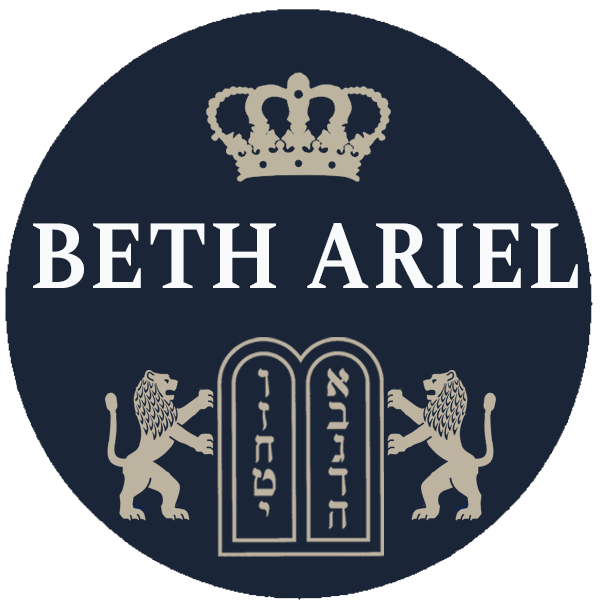Combined Service for Tarzana / Valencia Congregations. There will be no evening service.
Yom Kippur, “The Day of Atonement” is the holiest day in the Jewish calendar. It brings to a conclusion and climax a 40 day period of self-examination and reflection. Because Yom Kippur is a day of judgment during these 40 days individuals seek to make restitution for their misdeeds and repentance of their sins.
Rosh Hashanah begins on the 1st day of the Jewish month of Tishrei, while Yom Kippur occurs on the 10th day of the same month. The ten days between Rosh Hashanah and Yom Kippur are called “Yomim Noraim” (“Ten Awesome Days”), or “Aseret Yemei Teshuva” (“Ten Days of Repentance”).
According to Jewish tradition during these “Ten Days” God has opened before Him three books. The book of the righteous, in which all the names of the righteous are written and on Yom Kippur will have their names inscribed in the Book of Life for a good year. The book of the wicked, in which all the names of the wicked are written and on Yom Kippur will be consigned for a bad year. The book of the average, in which the names of those not wholly righteous nor wholly wicked are written. During these “Ten Days” those whose names are written in the book of the average have the opportunity to have their names written in the Book of Life on Yom Kippur provided they perform the necessary “good deeds.” Thus, the common greeting during this season is, “L’Shana Tova Tikatevu,” “May You be Inscribed for a Good Year.”
What the Law of Moses teaches about Yom Kippur is very different. There are three major passages that speak of Yom Kippur, Leviticus 23:26-32, Numbers 29:7-11, and the most important portion of Scripture on Yom Kippur Leviticus 16:1-34. This passage teaches us the following:
First, in verses 1-2 only Aaron and subsequent High Priests in Israel, and only on Yom Kippur is he permitted to enter the Holy of Holies in the Tabernacle and later the Temple. Failure to obey this commandment would result in death.
Second, in verses 3-5 Moses outlines what the High Priest was to do in preparation to enter the Holy of Holies. He was to offer the sacrifices for his own sins (vs.3), undergo a ritual bath (vs.4), and dress in white linen garments (vs.4). Then he was to take two he-goats for a sin-offering and one ram for a burnt offering to be offered in behalf of the people of Israel (vs.5).
Third, in verses 6-10 the order in which the offerings were to be presented is given. The High Priest first offered the sacrifices for himself and his family (vs.6). Then in verses 7-10 the High Priest is to determine the purpose for each he-goat which will be offered for the sins of the people. One will be sacrificed the other will be led away into the desert.
Fourth, in verses 11-14 the High Priest is to offer a sacrifice for himself and his household, and then offer the incense upon the altar of incense in the Holy Place before the Holy of Holy. Then the High Priest entered the Holy of Holies for the first time to sprinkle the blood of the bull offering seven times over the mercy-seat upon the ark of the covenant.
Fifth, in verses 15-19 the High Priest was to offer the atonement for the people of Israel. The first goat was sacrificed and its blood was brought into the Holy of Holies and sprinkled upon the mercy-seat, and then the blood was sprinkled upon the horns of the altar of sacrifice.
Sixth, in verses 20-22 the High Priest is to offer the second goat for the atonement of the people. He is to take the live goat and lay his hands upon it and confess all of Israel’s iniquities, transgressions, and sins. Then the goat was sent away.
Seventh, in verses 23-28 the cleansing ritual for the High Priest and assistants is outlined. And eighth, in verses 29-34 Moses provides concluding requirements for and explanation of Yom Kippur.
Much more could be said about Yom Kippur, but the following is clearly taught:
1. There aren’t many paths to God. There is only one way and that way is by a blood atonement. During the period of the Mosaic Law it was by means of the Yom Kippur sacrifice; today it is through the blood of Messiah Yeshua.
2. Leviticus 17:11, “For the life of the flesh is in the blood: and I have given it to you upon the altar to make atonement for your souls: for it is the blood that makes atonement by reason of the life.”
3. There is a need for a mediator between God and the people. Under the Mosaic Law that mediator was the High Priest. Today, our mediator is Messiah Yeshua.
4. The offering of sacrifices indicates there is the necessity for a substitute. Today, our substitutionary atoning sacrifice is provided by Messiah Yeshua. This is precisely what Isaiah the prophet taught in Isaiah chapter 53. “We all like sheep have gone astray, but the Lord has laid on him the iniquity of us all” (Isaiah 53:6).

